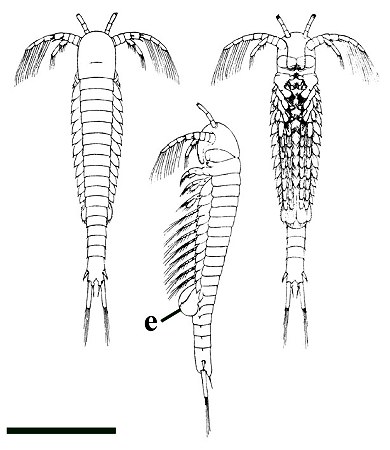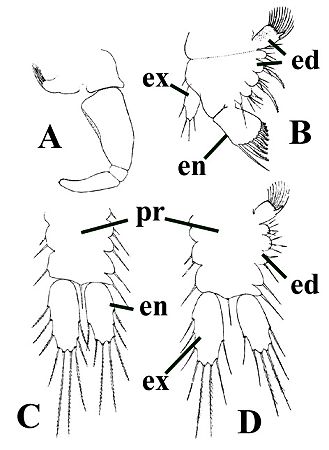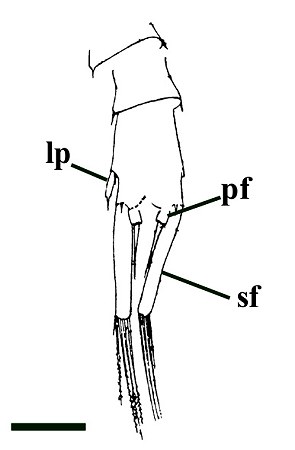
Reconstructions of Lepidocaris rhyniensis by Scourfield 1926.
Scale bar = 1 mm.
Scourfield, D. J., 1926. On a new type of crustacean from the old Red Sandstone
(Rhynie chert Bed, Aberdeenshire) - Lepidocaris rhyniensis, gen. et
sp. nov. - Philosophical Transactions of the Royal Society, London (Series
B), 214: 153-187.

Appendages of Lepidocaris: A. clasper of a male
B. maxilla-like appendage of the head region C. 6th - 10th pair of
appendages
D. 3th - 5th pair of appendages.
pr = protopod, ex = exopod, en = endopod, ed = endites

Tail (telson) of Lepidocaris
pf = primary furcae, sf = secundary furcae
lp = lateral process
Scale bar = 200 µm